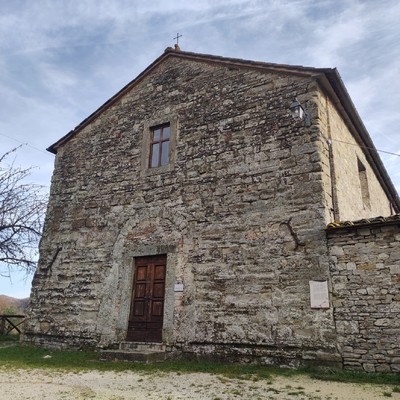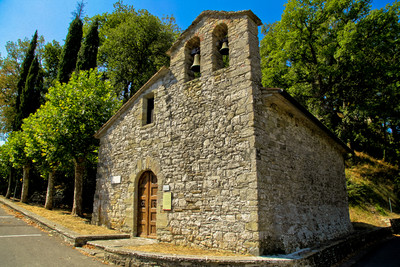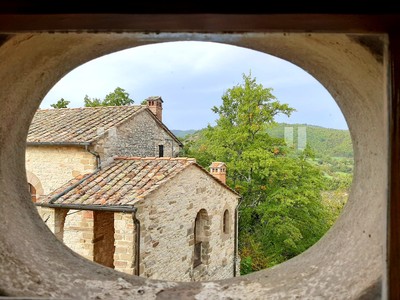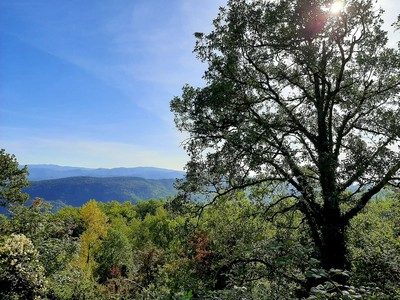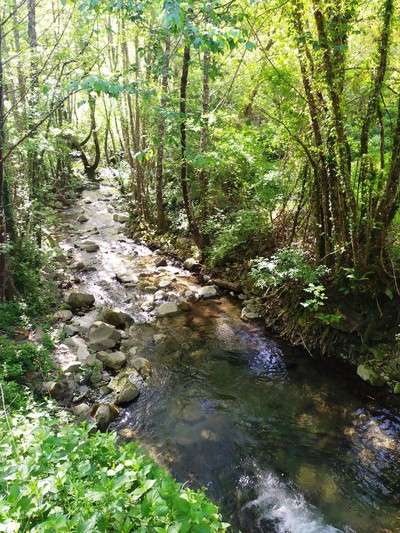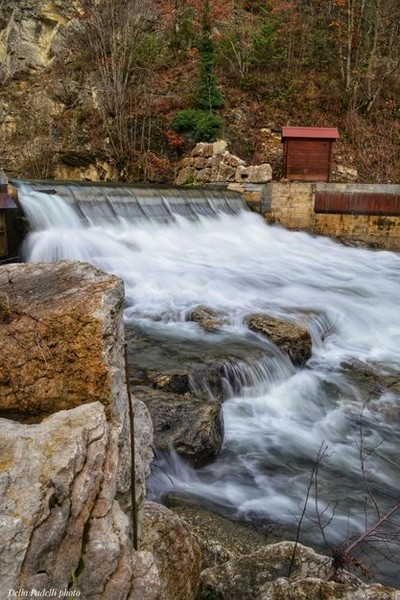
Il castello di Caprese, nominato la prima volta in antichi documenti camaldolesi nel 1011, è una fortezza che ha avuto una notevole importanza nei secoli XIV e XV proprio per la sua posizione strategica a guardia del passo che conduce dalla valle del Tevere al Casentino. Numerose e testimoniate sono nel territorio le tracce della spiritualità francescana, legate ad episodi della vita di Francesco. Il principale luogo è senza dubbio l’Eremo della Casella, luogo legato al viaggio di Francesco verso Assisi il 30 Settembre 1224 dopo aver ricevuto le Stimmate alla Verna. Dalla cima di quel monte Francesco avrebbe detto: "Addio monte di Dio! Addio monte Alvernia! Restati in pace, che più non ci vedremo." Ci sono inoltre altri edifici che custodiscono le tracce di una profonda devozione. La cappella di Zenzano conserva all’interno un grande masso dalla forma peculiare: su questa pietra, infatti, si sarebbe appoggiato Francesco per riposare lasciandovi la sua impronta. Lo racconta nel “Nuovo dialogo delle devozioni del Sacro monte della Verna” (1567) il frate minore Agostino Miglio. Si unisce la chiesa di San Polo in Monna dove Francesco trovò l’edificio in ristrutturazione e aiutò, con la forza delle sue spalle, alcuni operai a montare il pesante architrave di una porta che tradizionalmente viene individuata in quella sul lato meridionale dell'edificio.
-
The castle of Caprese, mentioned for the first time in ancient Camaldolese documents of 1011, is a fortress that had considerable importance in the 14th and 15th centuries because of its strategic position guarding the pass that leads from the Tiber valley to the Casentino. There are many witnessed traces of Franciscan spirituality in the territory, linked to episodes in the life of St. Francis. The main location is undoubtedly the Eremo della Casella (Hermitage of the Tollgate), a place linked to St. Francis’s journey back to Assisi on the 30th September 1224 after receiving the stigmata at La Verna. From the top of that mountain St. Francis would have said “Goodbye God’s mountain! Goodbye Mount Alvernia! Rest in peace, we will never see each other again.” There are also other buildings that hold the traces of a deep devotion. The chapel of Zenzano has a large, peculiarly shaped boulder preserved inside: in fact, St Francis is believed to have leant again this stone to rest, leaving his imprint on it. The Friar Minor, Agostino Miglio, recounts this story in “New Dialogue of the devotions of the Sacred Mountain of La Verna” (1567). It joins the church of San Polo in Monna where St Francis found the building being renovated and , with the strength of his shoulders, helped the workers to mount the heavy lintel of a doorway. It is traditionally identified as the door on the southern side of the building.








 Home
Home
.png)
